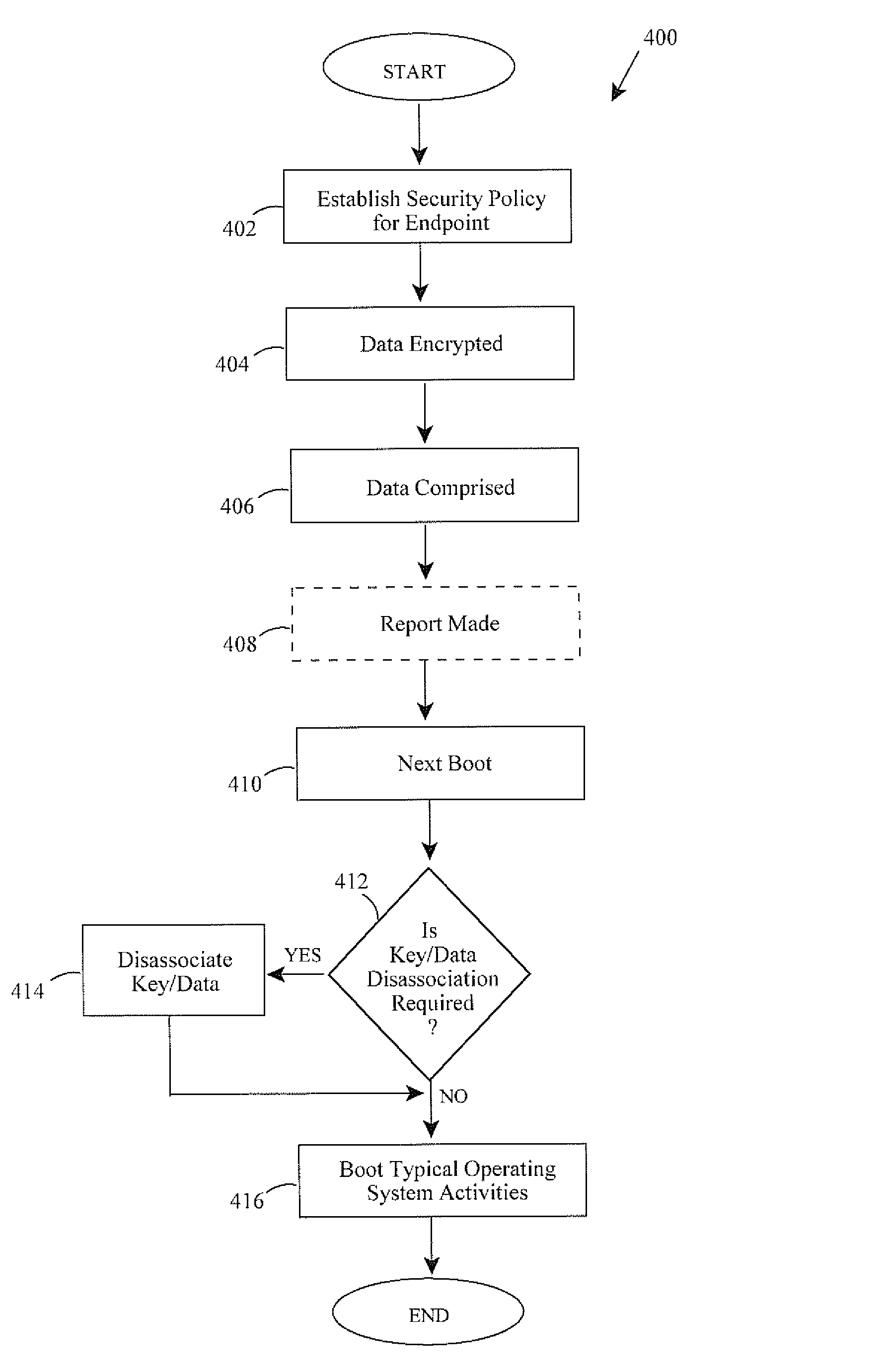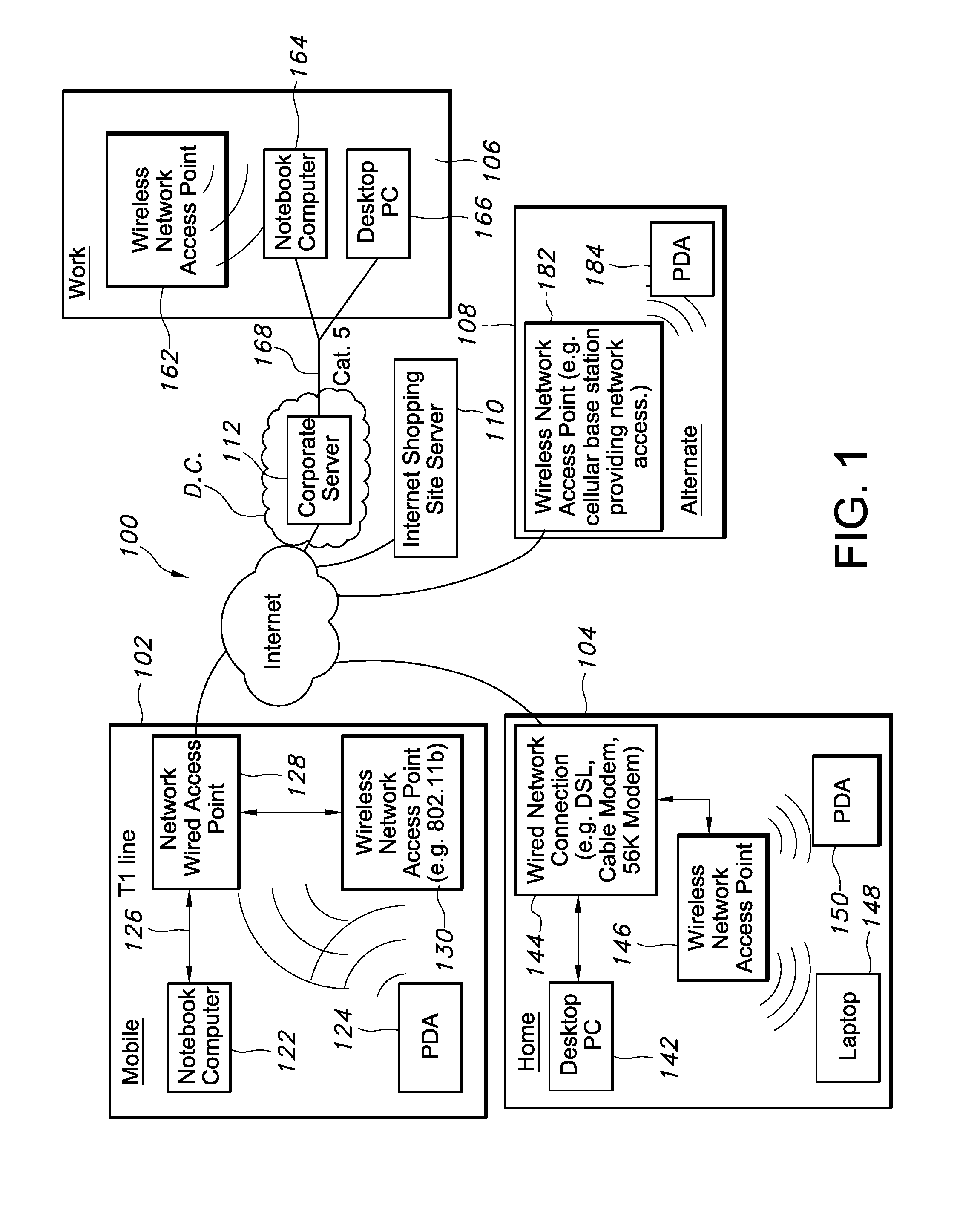Key management to protect encrypted data of an endpoint computing device
a technology of encryption and encryption data, applied in the field of encryption encryption and encryption data protection of endpoint computing devices, can solve problems such as re-associating otherwise disassociated keys and data
- Summary
- Abstract
- Description
- Claims
- Application Information
AI Technical Summary
Benefits of technology
Problems solved by technology
Method used
Image
Examples
example 1
[0057]1) The endpoint computing device is stolen by a thief.
[0058]2) The established computing policy for stolen devices is to entirely destroy decryption keys.
[0059]3) Upon a subsequent boot, a pre-boot phase of operation is launched that limits computing functionality on the endpoint. A) This prevents a user of the endpoint from accessing the encrypted data and the key. B) This only allows the endpoint 200 to communicate back to a networked central server 200.
[0060]4) The endpoint attempts authentication with the central server
[0061]5) The authentication fails because the present user of the endpoint is the thief or another party having downstream privity with the thief (e.g., a purchaser of the stolen endpoint).
[0062]6) The server instructs the policy enforcement module 214 to destroy all decryption keys. Alternatively, the server points to a specific policy stored on the endpoint which, when read, instructs the destruction of the decryption keys.
[0063]7) The key in the TPM (FIG....
example 2
[0064]This example contemplates a policy that controls / enforces means of credential validation during a Full Disk Encryption pass during a bootup sequence.
[0065]1) A security policy requires three factors of authentication related to an approved biometric device, user credential protocol exchange, and / or some USB token or certificate.
[0066]2) During a bootup sequence of the endpoint, the pre-boot OS locks down computing connections between the endpoint to only those interconnected USB devices with approved criteria (determined by policy settings such as known device serial numbers, make / model information, etc.) as well as specified / approved biometric devices (again policy based enforcement of aspects of the biometric device). The lock down also escrows the key from accessing the encrypted data.
[0067]3) By the pre-boot operating system, applying a policy-based firewall to protect user credential and / or authentication protocols to policy specified authentication servers, e.g., 200, or...
example 3
[0069]This example is the same as Example 2 related to key escrow, but could build on it with key updating and / or key backup operations.
[0070]Undertake, the same steps as above, but the final operation is not decryption of the encrypted data, but rather the following key options: Namely, upon administration of two or three factor authentication validation, the endpoint uses APIs exposed into either the Trusted Platform Module or cryptography-ASIC to:
[0071]1) Update the encryption keys on the hard disk.
[0072]2) Backup the existing keys for data recovery.
[0073]3) Erase the original key (ultimate security to render the data useless).
[0074]4) Update subsequent Pre-Boot Authentication policies
[0075]Naturally, many more examples can be imagined by the artisan of ordinary skill in the art and a near endless variety of examples can occur. Also, any of the foregoing embodiments contemplate that the operating system 375 (FIG. 3) and applications 380 could be any of many individual domains in ...
PUM
 Login to View More
Login to View More Abstract
Description
Claims
Application Information
 Login to View More
Login to View More - R&D
- Intellectual Property
- Life Sciences
- Materials
- Tech Scout
- Unparalleled Data Quality
- Higher Quality Content
- 60% Fewer Hallucinations
Browse by: Latest US Patents, China's latest patents, Technical Efficacy Thesaurus, Application Domain, Technology Topic, Popular Technical Reports.
© 2025 PatSnap. All rights reserved.Legal|Privacy policy|Modern Slavery Act Transparency Statement|Sitemap|About US| Contact US: help@patsnap.com



